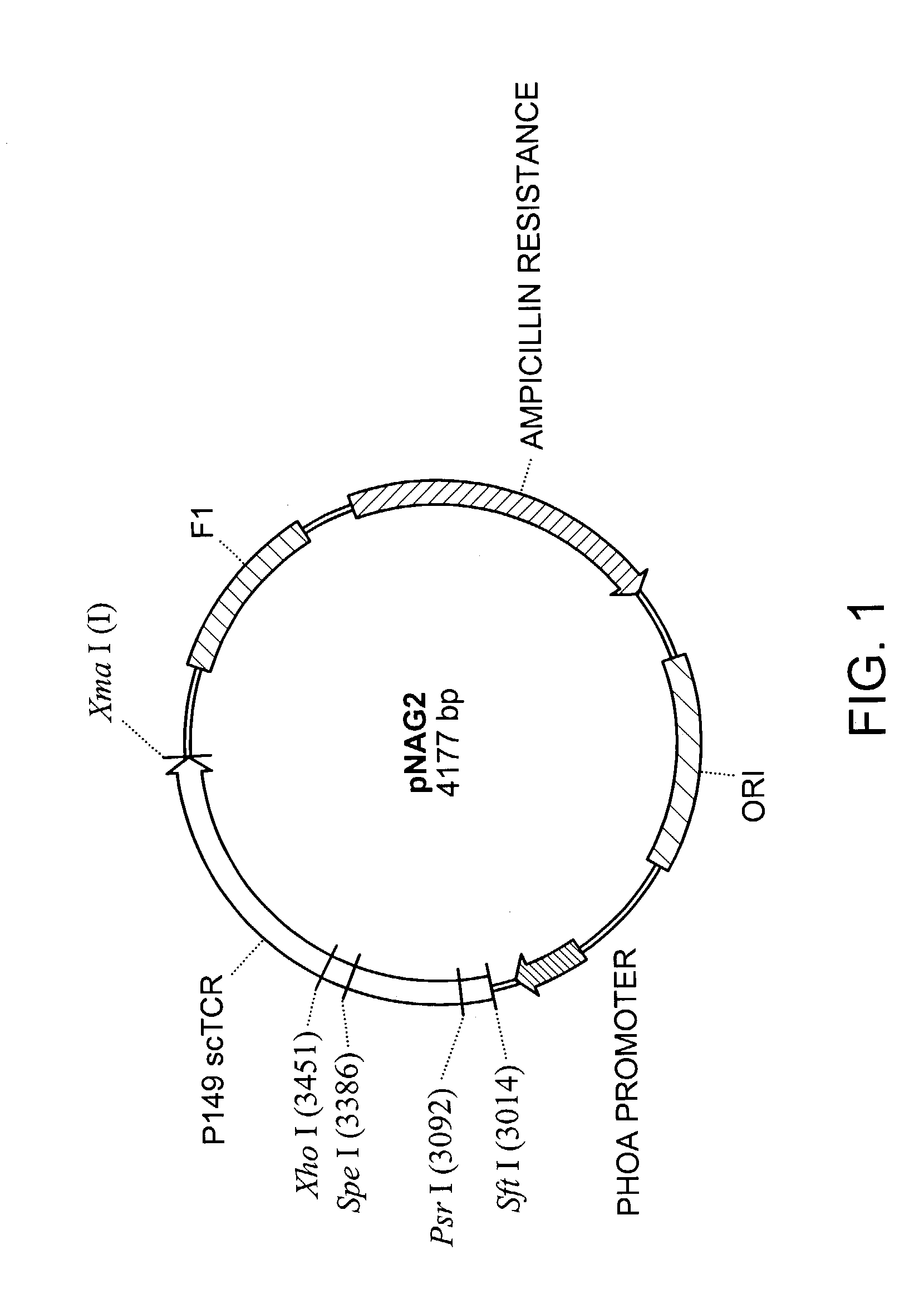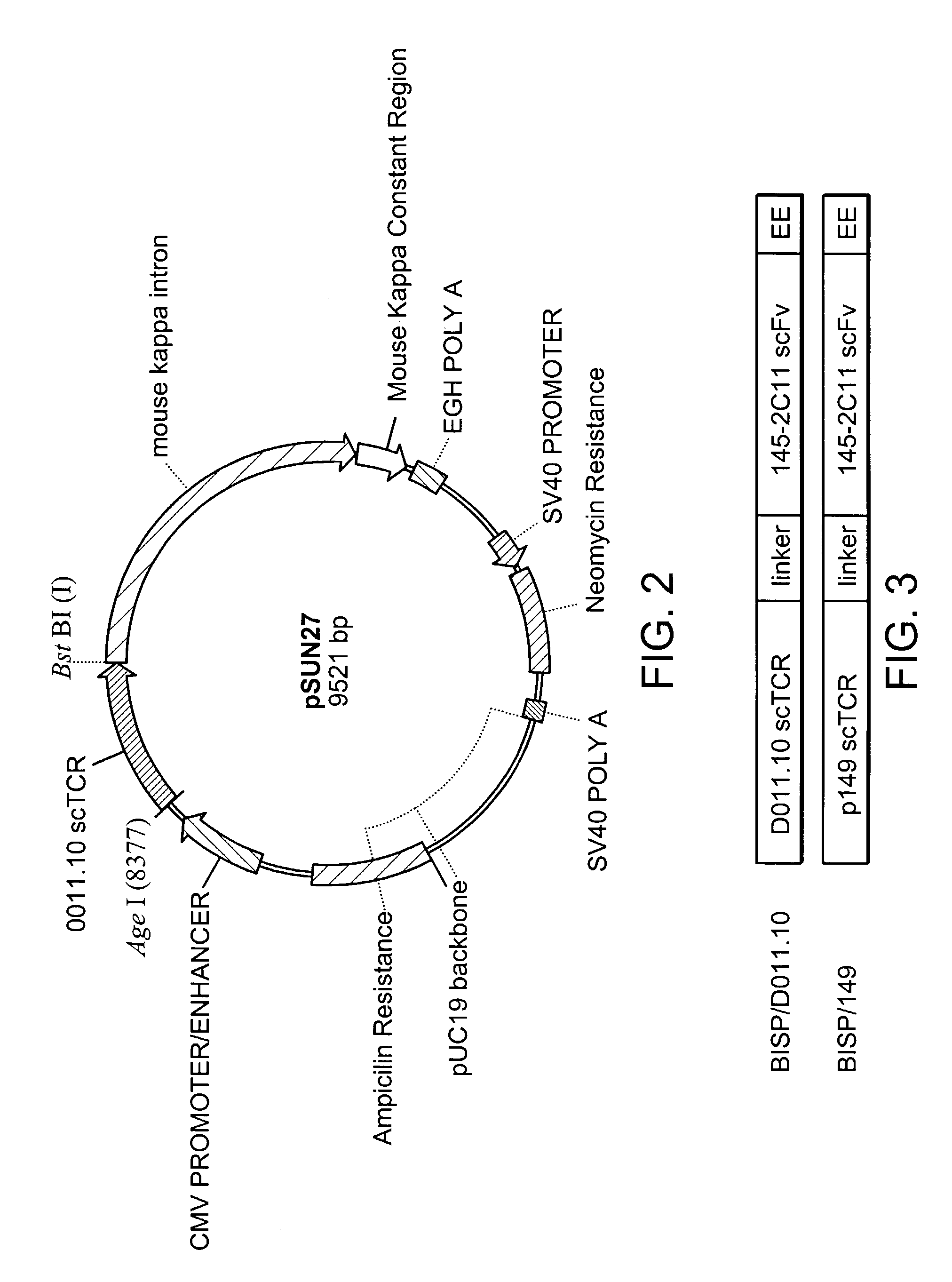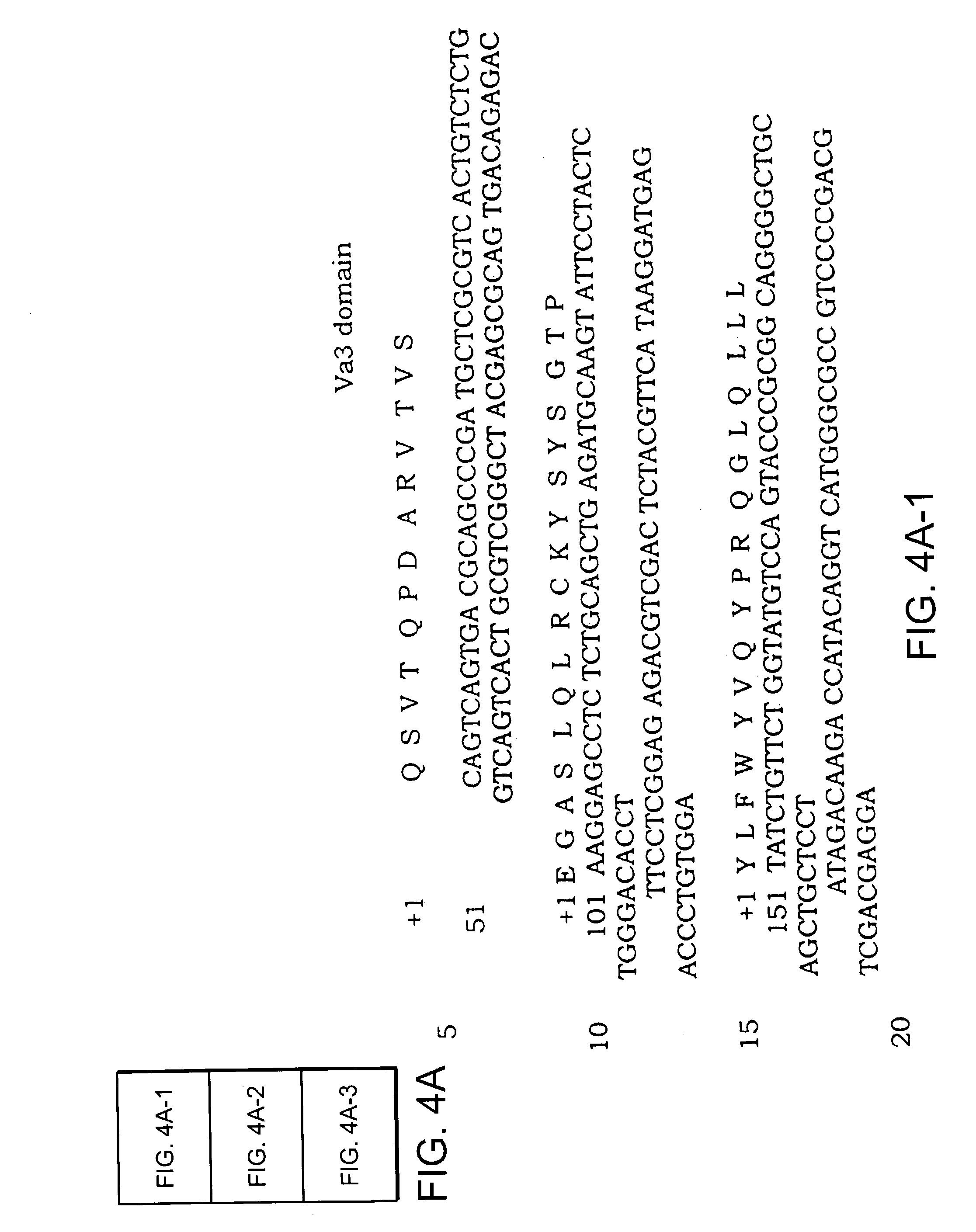P53 binding T cell receptor molecules
a t cell receptor and p53 technology, applied in the field of t cell receptor molecules, can solve the problems that the therapy has not proven effective against a majority of these indications, and achieve the effect of rapid growth in culture medium and easy transformation
- Summary
- Abstract
- Description
- Claims
- Application Information
AI Technical Summary
Benefits of technology
Problems solved by technology
Method used
Image
Examples
example 1
Construction of 264 Single-Chain (sc) TCR
[0125]The T cell clone, 264, recognizes a peptide fragment (aa 264-272; LLGRNSFEV) [SEQ ID NO. 1] of the human wild-type tumor suppresser protein p53 restricted by HLA-A2.1. The T cell receptor gene was cloned into a three-domain single-chain format previously shown to produce soluble TCR and functional receptor molecules.
[0126]In brief, mRNA was isolated from the T cell clone and cDNA was made using the Marathon cDNA Amplification Kit (Clontech). Sequencing of cDNA clones identified two distinct V alpha chains (V alpha 3 and V alpha 13) and a single V beta chain (V beta 3). The cDNA was used as a template in polymerase chain reaction (PCR) with primers KC228 and KC229 or KC226 and KC227 to produce 5′ SfiI-3′ SpeI V alpha 3 or V alpha 13 fragments respectively. The same DNA was then used as a PCR template with primers PRIB4 and KC176 to generate a 5′ XhoI-3′ XmaI V beta C beta chain fragment. The C beta chain was truncated just before the cys...
example 2
Construction of the CD3 Zeta Fusion Shuttle Vector
[0130]To determine which of the two V alpha chains was functional, both the 264-A and 264-B sc-TCR were expressed as CD3 zeta fusion molecules.
[0131]Construction of a “shuttle vector” has been previously described in pending U.S. application Ser. No. 09 / 422,375, the disclosure of which is incorporated herein by reference.
[0132]Briefly, alpha and beta chain TCR fragments were cloned into the expression vector pKC60 to create a V alpha-(G4 S)4 (SEQ ID NO: 23) V beta C beta scTCR molecule. The new vector was named pNAG2 (FIG. 9). pNAG2 was then re-amplified by PCR with primers KC203 and KC208 to generate a 5′ AgeI-3′ HpaI / BspEI / NruI / ClaI DNA fragment. The scTCR fragment was cloned into the pGEM-T Easy Vector System and this new pGEM-based vector was then used as a “shuttle vector” for introduction
[0133]Sc-Fv DNA was then restriction digested and cloned into the “shuttle vector” downstream of the sc-TCR. To connect the sc-TCR and sc-Fv t...
example 3
Expression of 264 scTCR / CD3 Zeta Fusion Molecules
[0139]Jurkat cells were prepared for transfection by washing with cold DPBS. The cells were resuspended in DPBS and mixed with 20 μg of PvuI linearized 264-A / CD3 zeta or 264-B / CD3 zeta DNA. After five minutes on ice, the cells were electroporated using a Gene Pulser (BioRad) set to deliver one pulse of 250 volts, 960 μFd. The pulsed cells were placed on ice for five minutes. The cells were diluted into 10 ml of 10% IMDM medium (IMDM, 10% FBS, 2 mM glutamine) and grown in a T-25 cm2TC flask overnight at 37° C. with 5% CO2 The next day, the cells were plated in 96 well plates with selective medium (10% IMDM plus 1.0 mg / ml G418). After 1 week, the concentration of G418 was increased to 2 mg / ml. The growing colonies were re-fed approximately two weeks after transfection and screened about one week later.
[0140]The transfected Jurkat cells were screened for surface expression of scTCR using flow cytometry analysis. Positive transfectants we...
PUM
| Property | Measurement | Unit |
|---|---|---|
| w/w | aaaaa | aaaaa |
| temperature | aaaaa | aaaaa |
| ionic strength | aaaaa | aaaaa |
Abstract
Description
Claims
Application Information
 Login to View More
Login to View More - R&D
- Intellectual Property
- Life Sciences
- Materials
- Tech Scout
- Unparalleled Data Quality
- Higher Quality Content
- 60% Fewer Hallucinations
Browse by: Latest US Patents, China's latest patents, Technical Efficacy Thesaurus, Application Domain, Technology Topic, Popular Technical Reports.
© 2025 PatSnap. All rights reserved.Legal|Privacy policy|Modern Slavery Act Transparency Statement|Sitemap|About US| Contact US: help@patsnap.com



